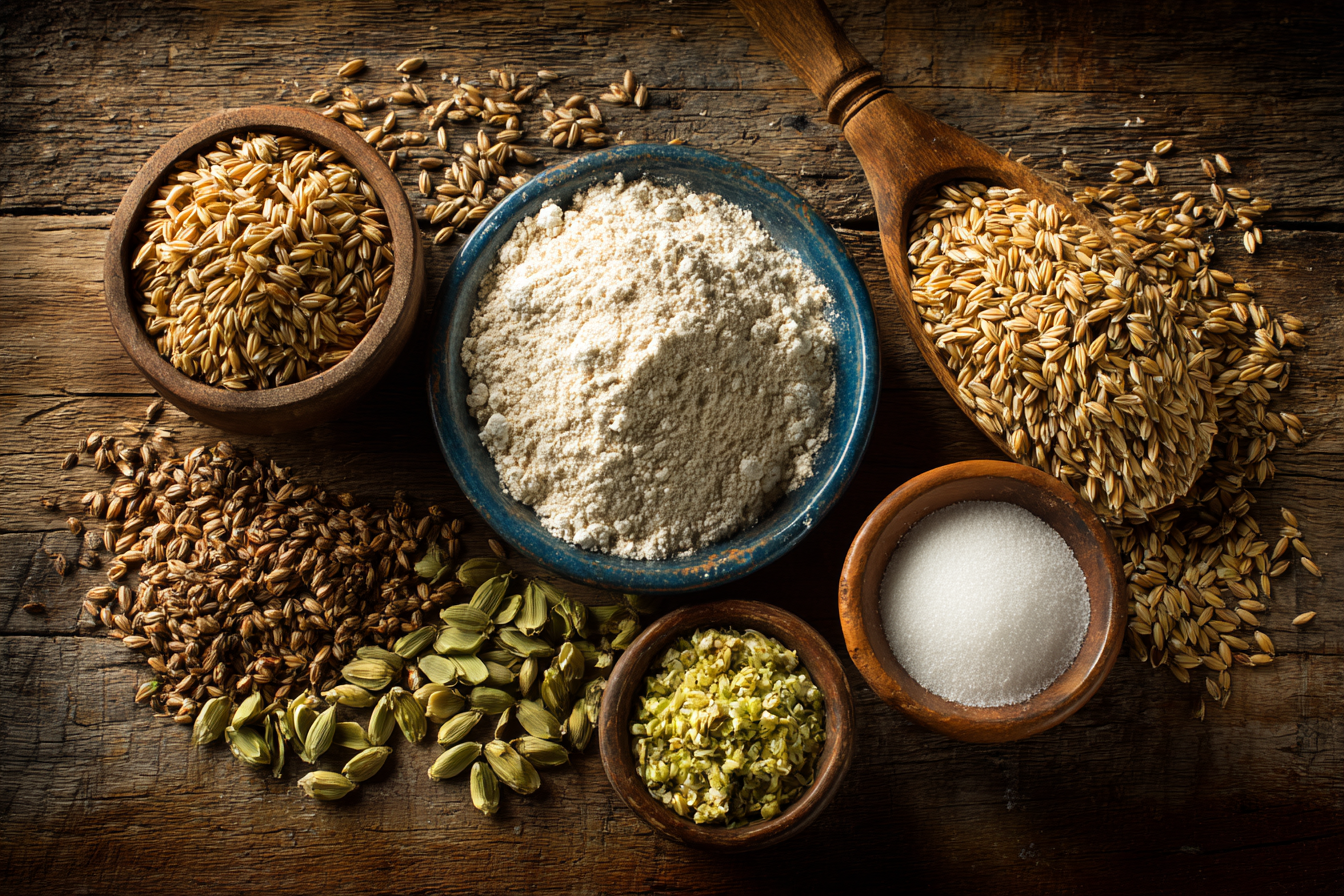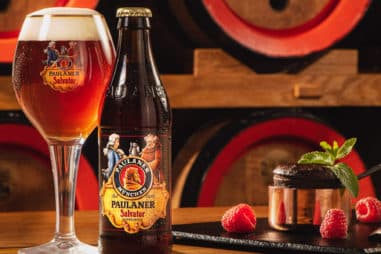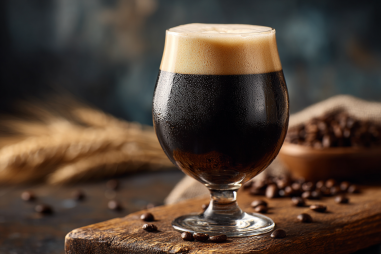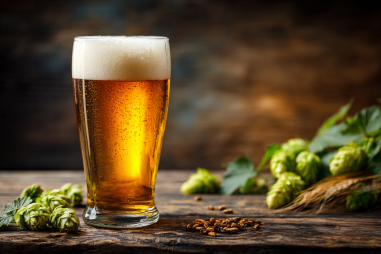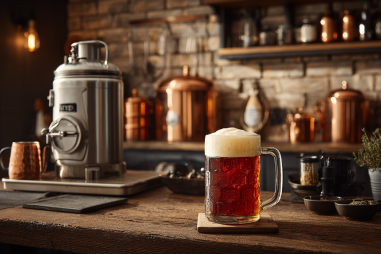American Red Ale is a beloved style among craft beer enthusiasts, known for its beautiful ruby-red hue, balanced malt sweetness, and lively hop character. But what really brings this beer to life starts long before brewing—it’s in the choice of ingredients. From the selection of malt to the types of hops, yeast strains, and even water chemistry, each component plays a crucial role in defining the rich complexity of an American Red Ale. Whether you’re a seasoned brewer or just diving into this style, understanding these foundational ingredients is key to crafting a beer that’s both flavorful and memorable.
Malt Selection and Its Impact on Color and Sweetness
The backbone of any American Red Ale lies in its malt bill. Malt not only provides fermentable sugars, which become alcohol and carbonation, but it heavily influences the beer’s color, body, and flavor profile. For American Red Ales, the malt profile is typically a blend designed to create that signature deep amber to red color and a balanced sweetness that counterbalances the hops.
Base malts like pale malt or 2-row malt are commonly used as they provide a clean, slightly sweet foundation and abundant fermentable sugars. To achieve the red hue and depth of flavor, brewers incorporate specialty malts such as:
- Caramel/Crystal Malt: These malts are responsible for the rich amber to deep red coloring. They also bring caramel, toffee, and sometimes raisin-like sweetness, which adds complexity and smoothness to the beer.
- Munich Malt: Adds a touch of biscuit and breadiness, deepening the malt character.
- Victory Malt: Offers a nutty, slightly toasted flavor that enhances complexity without overpowering.
- Chocolate Malt or Black Malt (used sparingly): These can be included in small quantities to darken the color and add subtle roasted notes without crossing into stout or porter territory.
The careful balance of these malts creates the chewy malt backbone that American Red Ales are known for, delivering just the right amount of sweetness to complement the hops without making the beer cloying.
Hop Varieties Commonly Used and Their Flavor Contributions
Hops bring life to the American Red Ale through bitterness, aroma, and flavor. The style is known for its moderate to assertive hop bitterness, usually balanced by malt sweetness, and a bold but clean hop character. American hop varieties dominate, reflecting the beer’s craft heritage.
Popular hop choices include:
- Cascade: The classic American hop with citrusy, floral, and slightly piney notes. It’s often used in the aroma and finishing additions to provide a bright, refreshing character.
- Centennial: Sometimes called a super-Cascade, it offers a higher alpha acid level and a citrus-forward profile with floral and pine notes.
- Chinook: Known for its assertive pine and spicy flavors, Chinook adds a bold bitterness and complexity to the hop profile.
- Amarillo: Adds sweeter orange and tropical fruit aromas, enhancing the beer’s aromatic complexity.
- Simcoe: A versatile hop with pine, earth, and fruity aromas that can add depth and balance to the hop profile.
These hops are typically added in multiple stages during brewing—bittering at the start of the boil and aroma/flavor hops toward the end or during dry hopping—to achieve the layered hop profile characteristic of a great American Red Ale.
Yeast Strains Suited for American Red Ale Fermentation
Yeast is often the unsung hero in brewing, transforming simple sugars into complex flavors and alcohol. For American Red Ales, ale yeast strains that produce a clean fermentation profile with subtle fruity esters are preferred. This allows malt and hops to take center stage while contributing a balanced mouthfeel and slight fruity undertone.
The most common yeast choices include:
- American Ale Yeast (Saccharomyces cerevisiae): Clean fermenters with moderate attenuation, they emphasize hop and malt flavors without excessive fruity or phenolic notes.
- California Ale yeast: A popular variant producing crisp, clean ales with moderate ester production.
- English Ale yeast strains (used occasionally): Can be employed for slightly maltier profiles, adding soft fruitiness or mild nuttiness, but typically American strains are preferred for a cleaner backdrop.
The desired fermentation temperature usually ranges from 65-72°F (18-22°C), balancing ester production and clean fermentation to ensure the beer’s flavors remain sharp and well-integrated.
The Role of Water Chemistry
Water is the often-overlooked ingredient that subtly influences the brewing process and final beer characteristics. The mineral content and pH of brewing water affect mash enzyme activity, hop bitterness expression, and mouthfeel.
American Red Ales generally thrive with moderately hard water featuring balanced sulfate and chloride levels. The sulfate-to-chloride ratio plays a critical role:
- Sulfates enhance hop bitterness and crispness.
- Chlorides emphasize malt sweetness and fullness.
For a well-rounded American Red Ale, brewers often aim for a water profile with moderate sulfates and chlorides, typically around 150-200 ppm sulfate and 100-150 ppm chloride. This balance ensures that neither malt nor hops dominate but instead play in harmony.
Brewers adjust their brewing water by adding gypsum, calcium chloride, or other salts as needed to match the style’s profile, ensuring the best expression of flavors.
How Ingredient Choices Affect Final Flavor and Aroma
Every brewing ingredient contributes to the final sensory experience of an American Red Ale. Malts deliver the backbone—offering caramel, toffee, and biscuit flavors along with the mouth-coating sweetness. Hops bring a spectrum of citrus, pine, floral, and earthy notes that contrast and brightness to balance the malt.
The yeast strain’s clean yet subtly fruity fermentation profile ties everything together, creating a smooth, drinkable character. Meanwhile, the water chemistry influences how these flavors are perceived—sharpening bitterness or rounding out the maltiness.
The interaction between these ingredients results in the hallmark features of an American Red Ale: a luxurious amber-red appearance, a balanced malt body with a hint of sweetness, and a refreshing yet complex hop-driven aroma and finish.
Sourcing Quality Ingredients for Brewing
To craft an exceptional American Red Ale, starting with high-quality ingredients is essential. When selecting malt, choose fresh grains from reputable maltsters to ensure consistent color and flavor. Specialty malts should be fresh as well, as stale malts can produce off-flavors and reduce impact.
For hops, freshness is critical—oxygen and time degrade hop alpha acids and aromatic compounds, so purchasing from trusted hop suppliers and using them soon after harvesting is ideal. Many brewers use vacuum-sealed, refrigerated hops to retain optimal quality.
Yeast can be sourced as liquid cultures or dry yeast, with liquid strains offering more variety but requiring careful handling for vitality. Dry yeast tends to be easier to manage and store. Proper yeast propagation or rehydration will support healthy fermentation.
Water should be tested and adjusted with food-grade mineral salts and acids as necessary. Some brewers even invest in filtration systems or reverse osmosis units to control water quality precisely.
Finally, engaging with local homebrew shops, online specialty retailers, or partnering with craft maltsters and hop farms can help ensure ingredient quality and support sustainable brewing practices.
Building the Foundation for Great American Red Ale
Mastering the key brewing ingredients is the first step to crafting a memorable American Red Ale. Each element—from malt selection through hops, yeast, and water—interlocks like pieces of a puzzle, shaping the beer’s character and drinkability. Understanding how malts deepen color and sweetness, how hops contribute contrasting bitterness and aroma, how yeast refines the profile, and how water chemistry modulates these effects empowers brewers to create balanced, flavorful brews.
With a thoughtful approach to sourcing and combining these ingredients, brewers can capture the spirit of American Red Ale and delightedly share a beer with rich color, complex aromas, and a perfectly balanced palate.

